
 US Navy Fleet Destroyers (1934-48): USS Mahan, Cummings, Drayton, Lamson, Flusser, Reid, Case, Conyngham, Cassin, Shaw, Tucker, Downes, Cushing, Perkins, Smith, Preston, Dunlap, Fanning
US Navy Fleet Destroyers (1934-48): USS Mahan, Cummings, Drayton, Lamson, Flusser, Reid, Case, Conyngham, Cassin, Shaw, Tucker, Downes, Cushing, Perkins, Smith, Preston, Dunlap, FanningThe Mahan-class were 18 standard fleet destroyers, 16 planned FY33 and laid down in 1934 and the last two (Dunlap and Fanning) FY34, all commissioned in 1936-1937. They were an improvement over the Farraguts, less on stability but more on armament with no less than 12 torpedo tubes and other innovations on a larger, 1,500 tons displacement. They also had a new steam propulsion system, lighter and more efficient and soon a standard of USN destroyers. They all saw action in the Pacific, notably Guadalcanal, Santa Cruz Islands, Leyte Gulf, or Iwo Jima. In between they performed a lot of different tasks with six lost in action, earning collectively 111 battle stars. #ww2 #usn #mahan #destroyers
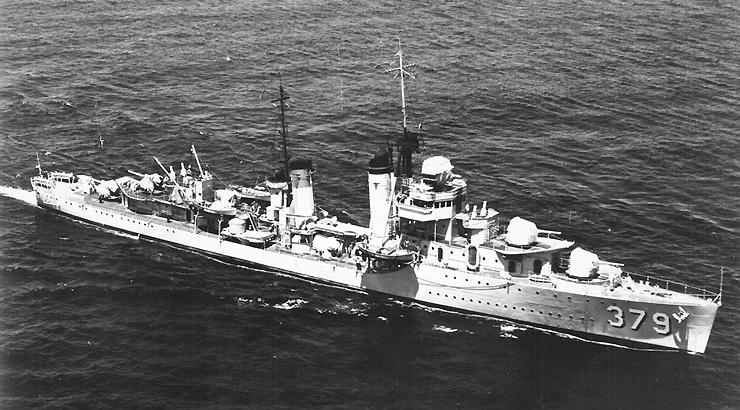
Design Development and Construction
The Mahan-class destroyers were logical follows-up of the Farragut class. The admiralty board had the standard fleet destroyer validated and wanted a larger class with improvements when first planned in early 1933. On the design stage already the Farragut class destroyers were criticised by the USN chief staff for insufficient torpedo armament. It was made clear the following FY1933 class would require an upgrade on this point of view.
Notably members of the board fell in agreement with the choice of machinery, and wanted the most up-to-date arrangement possible, for better speed and range (this came later).
But the General Board mostly dealt with armament changes:
-The first proposal went with 12 torpedo tubes, to the sacrifice of a single 5-inch (127 mm)/38 gun.
-Next, it was proposed to retain all five guns AND the twelve torpedo tubes upgrade. The tradeoff was to have surface-capable guns only, which had simpler and lighter mounts.
The Chief of Naval Operations (CNO) objected to this being against the new trend of versatile AA/surface defence role for the fleet. In his own terms he refused “subordinating the gun to the torpedo”
-Eventually a compromise was struck: A new engineering plant would be installed (after Gibbs & Cox’s proposal, see after), a new battery arrangement with No.3 gun moved to the aft deckhouse, ahead of No.4 mount. This cleared up the rear amidship section, enabling a third quadruple torpedo tube to be installed. Then, the two middle torpedo tube banks were moved to the sides, the centerline being used for a larger aft deckhouse.
This design had the merit to keep all planned dual five 5 in/38s. The tradeoff was that only the first two had gun shields (With the sub-class Dunlap they were swapped for brand new enclosed mounts).
The machinery was revolutionary at least on a destroyer: They were basically an adaptation of a land-based machinery, a new generation of steam propulsion system combining greater pressure and temperature, combined with a new generation lightweight steam turbine. There were less parts, and it was overall simpler and more efficient, easier to maintain and more economical. The use of double reduction gearing als helped to further reduce the size and weight of the turbine. The space was used to add low-pressure cruising turbines, helping to regain extra range as well. This was still paid globally wit 10% more displacement compared to the Farragut class.
The Mahans as approved and programmed FY1937 (first 16 vessels) under the NIRA Executive Order on 16 June 1933. The last two were authorised under the Vinson-Trammell Act of 27 March 1934 (as part of 95 destroyers up to DD-482). Contracts for the first six were attributed to three shipbuilders which lacked for the Navy an acceptable in-house design structure. Therefore New York’s Gibbs & Cox stepped forward as primary design agent. Having no experience but perfectly well-versed in passenger-cargo liners, especially for their innovative propulsion systems, they managed to attract the attention of the US Navy and were given also the design of the Farraguts. Naturally they were contacted for the Mahan class also. They promised a cheaper, faster, more efficient propulsion system with the systems seen above. This proved a revolution for US destroyer design.
Design of the class
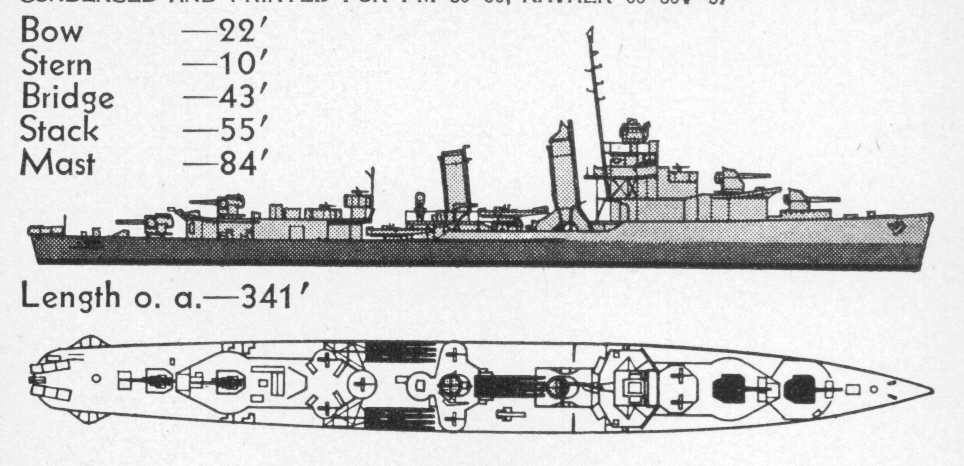
ONI Rendition of the Mahan class
Detailed plans of USS Cushing. src
Hull and general design

2-views of the DD-376 in 1942. src: Unknown, from pinterest.
The Mahans were a tad larger and much heavier than the Farraguts, at 1,500 long tons (1,524 t) standard and up to 1,725 long tons (1,753 t) deeply loaded. They reached 341 feet 3 inches (104.0 m) in lenght, by 35 feet 6 inches (10.8 m) in beam, for a 10 feet 7 inches (3.2 m) drag=ught (normal). The Mahans had a tripod foremast and pole mainmast aft, but for better AA field of fire, no nautical rigging went bracing the tripod. The silhouette was in fact more reminiscent of the larger Porter-class destroyers.
The Mahans were fitted with the first emergency generators, which replaced the storage batteries of earlier classes. Gun crew shelters were built for the superimposed weapons, one shelter before the bridge and one atop the shelter deck aft. Their Complement reach approximately 250 officers and enlisted men.
These ships also carried among other equipments two signal lamps on the bridge’s wings, a single 24-in Model 24-G-20 searchlight on a platform aft of the rear funnel, in between TTs.
They also had two cutters under davits abaft the forefunnel-bridge as well as 12 life rafts, carried already inflated.
Powerplant
The propulsion was considerably improved over the Farragut standard as saw above. They had brand new lighweight and compact General Electric geared steam turbines (impulse-type, also called Curtis turbines). They drove two shafts for a total output of 46-48,000 shaft horsepower (34-36,000 kW) – The Farraguts went to 42,800 shp (31,900 kW) in comparison. Steam came from four also brand new Babcock & Wilcox/Foster Wheeler water-tube boilers. Steam was supereheated, raised from from 400 psi (2,800 kPa) to 465 psi (3,210 kPa) and reaching in temperature 648 °F (342 °C) to 700 °F (371 °C). Steam from the boilers went to the HP turbine, exhausted to the LP turbine, exhausted to the condenser.
The other innovation in the turbines was their Double reduction gearing making for smaller and faster-turning turbines. They were divided into a high-pressure and low-pressure turbines feeding the common reduction. The space freed was occupied by cruising turbines improving fuel economy at lower speeds. Boiler economizers also allowed to improve fuel economy as the latter was heated before being injected.
In all, the Mahans carried 523 long tons (531 t) of fuel oil enabling 6,940 nautical miles (12,850 km; 7,990 mi) at 12 knots, so far better than the Farraguts. Range increased was thus 1,000 nmi (1,900 km; 1,200 mi). All this came withing the same same space and weight as in the Farragut class hull.
Armament
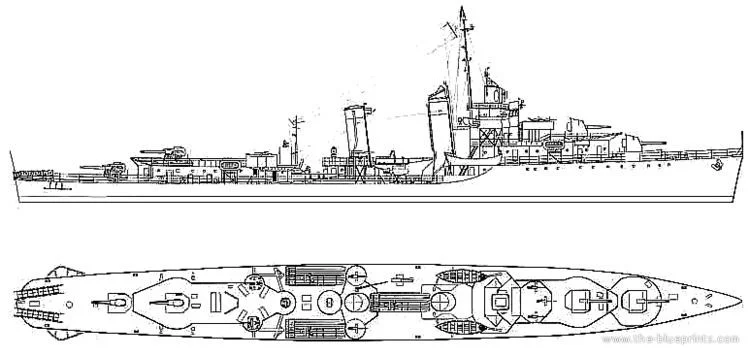
2-view of USS Cushing, showing the position of the torpedo tubes, main and secondary armament in 1942 (the blueprints)
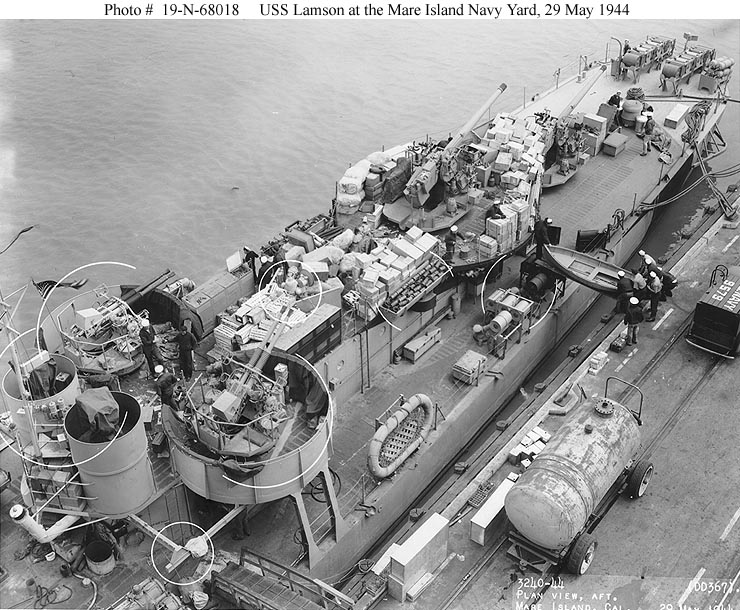
USS Lamson at Mare Island after transformations, 29 May 1944, ONI
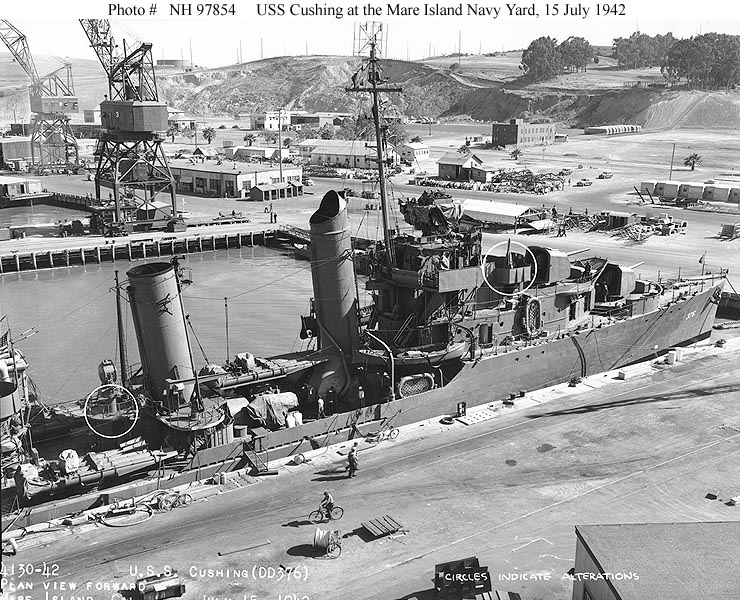
USS Cushing transformations at Mare Island Arsenal 15 July 1942, ONI
Main: 5x 5-in/38 guns
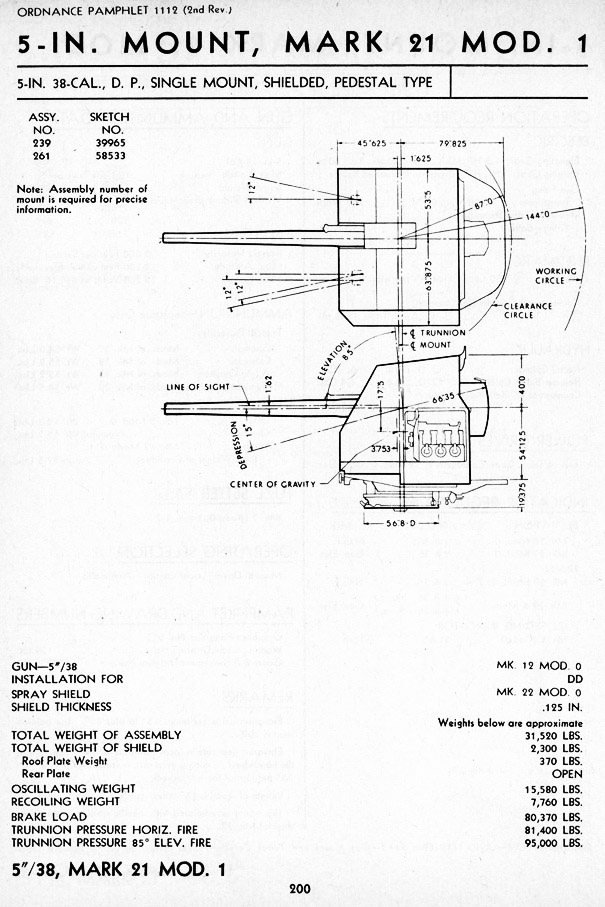
The main battery comprised five dual purpose 5-inch (127 mm)/38 caliber guns Mark 12 Mod 0, as for the Farraguts. They were matched with single Open/Open-back Shield Pedestal Mounts Mark 21.
However they were served by the new Mark 33 gun fire-control system (see later). Forward gun shields only.
The real novelty however was the introduction of fully enclosed Mark 25 mounts on the last two ships, USS Dunlap and Fanning (DD-384/385). They also introduced the Mark 24 Mod 0 and Mod 1 stern mounts. They were completed as such, with the two Mark 25 enclosed mountings a the bow, three Mark 24 pedestal mounts at the stern. This is the only reasons they are considered by some as a sub-class within the Mahan class. All previous vessels only had Mark 21 pedestal mounts on all five positions.

Mark 25 Mod 0 specs:
Weight 42,000-44,900 lbs. (19,051-20,367 kg)
Elevation rate 15 degrees per second for 15/+85 degrees
Train rate 28.7 degrees per second
Gun recoil 15 in or 38 cm
Torpedoes
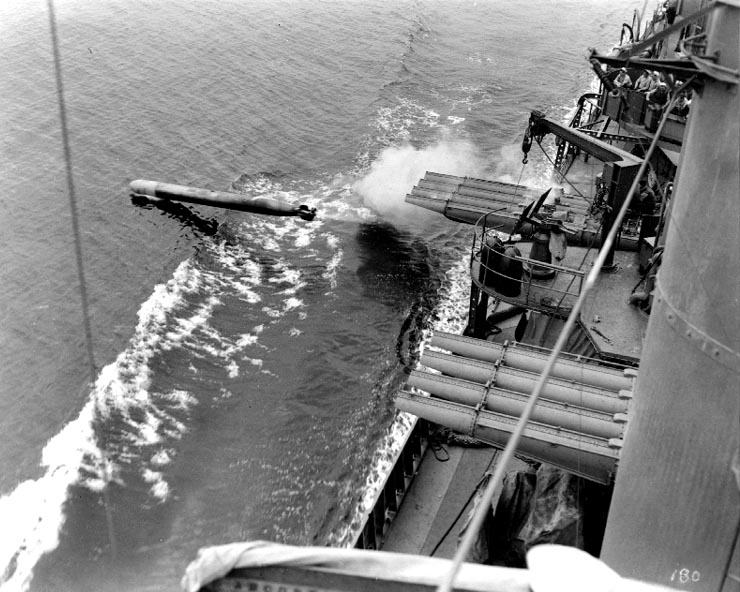
USS Dunlap firing its Mark 15
Engineers found ways to shoehorn carry 12 torpedo tubes instead of eight. In three quadruple torpedo tube mounts. The Mark 11, then Mark 12 torpedoes were guided by the Mark 27 torpedo fire control system. The infamous Mark 15 torpedo became the new standard in 1938.
Mark 15 Torpedoes:
⚙ Mark 15 Mod 0 Torpedoes Specifications |
|
| Design/Introduction, Type | 1934/35, Surface ships |
| Weight/neg.buoyancy | 3,438 lbs. (1,55 kg)/1,260 lbs. (572 kg) |
| Dimensions | 22 ft 7 in (6.883 m) |
| Propulsion | Wet-Heater steam turbine |
| Warhead | Mod 0: 494 lbs. (224 kg) TNT |
| Settings (Yds/kts) | 6,000/45 – 10,000/33.5 – 15,000/26.5 |
| Guidance | Mark 12 Mod 3 gyro |
AA armament
Thsy only had four single .50 caliber machine guns (12.7 mm) heavy machine guns for anti-aicraft defence. This was deemed enough at the time (1933). They were located on a platform (2) forward and below the bridge, the last pair on the deck house forward of 5-in mount.
This was of course considerably reinforced during the war (see below).
Depth Charges Armament
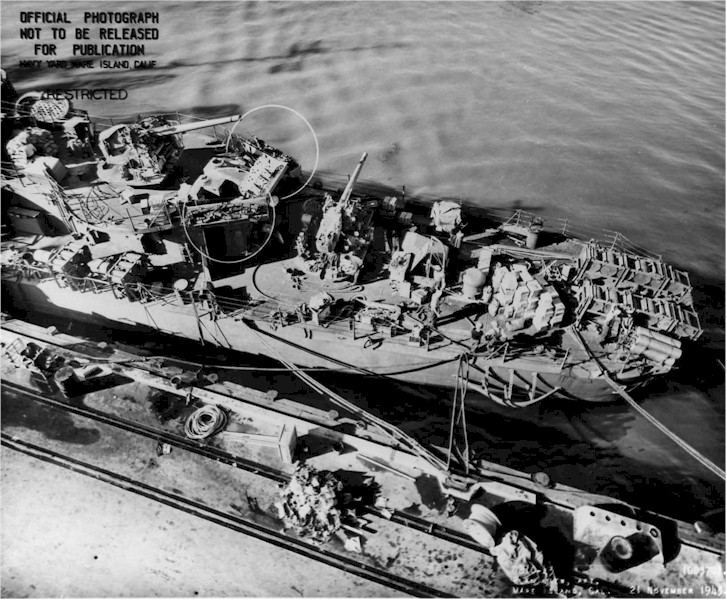
Stern view showing the two aft guns and depht charge racks, USS Case.
They were fitted with two Depth charge roll-off stern racks, of ten each, 20 in all (noreloads). From 1942, four additional Y-Guns depth-charges thrower (3 reloads each) were added amidships, abeam the aft deckhouse, for better escort operation in the Atlantic, with circa 44 DCs in stock total.
Fire Control & Sensors
Mk33 Gun Fire Control System:

A Mk.33 on USS Henley (Bagley class)
The Mark 33 GFCS was the great destroyer stabdard Fire Control System, associated to the Mark 10 Rangekeeper analog fire-control computer. The rangekeeper was mounted the open director atop the bridge rather than in a separate plotting room. This was not the case with the following Mark 37 GFCS. Firing solutions were computed for targets moving at up to 320 knots or 400 knots in a dive.
An interwar generation, they had no fire-control radar initially. After 1942, some directors were enclosed with a Mark 4 fire-control radar added ontop. Other had a Mark 4 radar added over the open director. The latter enabled ranges up to 40,000 yards but more commonly 30,000 yards. Radar enabled to hit accurately vessels at night or in any weather. The Mark 33 used tachymetric target motion prediction and was overall satisfactory but was still heavy and suffered wartime production problems resolved by the Mark 37.
The computing mechanisms Mark 10 were found too slow though to reach initial solutions and changing it while in motion. The problem that before a new system could be installed, spaced needed to be found in the design below decks. The Mark 33 was also clearly inadequate against fast-moving aviation. The system still was to wait for the better Mark 37 to be installed, on later ship. The Mark 33 remained operational by default on the Farraguts, Mahan, Gridley, Bagley and Benham up to their decommission.
SC radar:
 The great USN standard radar from 1942, fitted mostly on destroyers and light ships in general. The SC family sets had an “A” scope and IFF connections asw ell as gyro-compass repeater link.
The great USN standard radar from 1942, fitted mostly on destroyers and light ships in general. The SC family sets had an “A” scope and IFF connections asw ell as gyro-compass repeater link.
The SC -and early SC-1- had a max reliable range of 30 miles for medium bombers at 1,000′ altitude. With preamplifier on the later SC-1 and SC-2/3, this was ported to a whooping 75 miles.
Range accuracy of the SC was ± 200 yards, later ± 100 yds on the SC-1 whereas bearing accuracy was ± 5°.
Made by General Electric it was a 220 kW Air/Surface-search radar working on VHF band at 60 Hz PRF, ofering a Beamwidth of 10–25°, Pulsewidth of 4–5 μs and range of 48–120 km (30–75 mi) with a precision of 90–180 m (98–197 yd).
Other sensors
SG Radar: 50 KW Surface Search Frq 3 GHz PRF 775/800/825, Bmwdt 5.6°/15°, Pwdt 1.3–2 μs RPM 4/8/12, Range 15 nmi @200 yd*
Mk 12.22 radar: Medium Wave Fire Control for Dual Purpose Batteries, goes with the Mark 37 FC Director*
QCA Sonar: Early type, spherical, underwater. Manufactured by CMB. 24 cycles frequenty, M/S spherical projector, 400 Watts, electric hoist and train*
*according to navypedia
Modifications
In early 1942, the Mahan-class destroyers had their AA armament improved but full refits only started for all ships until 1944. Most notably the need for more AA dictated the removal of one 5-inch/38 gun which was replaced by a learge platform accomodating two twin Bofors 40 mm guns (1.6 in) on each wing. Room was also found to shoehorn between four and six 20 mm Oerlikon (0.79 in) guns.
In January 1945, the two quadruple side torpedo tubes were also removed amidst kamikaze attacks, replaced by two 40 mm quad mounts, quite a useful move. In June 1945 the third centerline tube was also removed (leaving the destroyers without their close quarter surface best armament) accomodating two more 40 mm twin mounts behind the funnel. Directors for theser new 40 mm mounts were also added, as the Mark 33 FCS were ill-adapted for the task. These Mark 51s FCS were to replaced by new the GFFC Mark 63 installations with radar at the very end of the war, kept after it.
As for details: By early 1942, USS Mahan, Cummings, Drayton, Lamson, Flusser, Reid, Case, Tucker, Cushing, Perkins, Smith, Preston, Dunlap, Fanning had their admidship 127mm/38 as well as the four cal.05 browning removed. Seven single 20mm/70 Mk 4 were added as well as four 4 DCT (depht charge throwers) in addition to their two racks. This ported the provision to 44 DCs in all.
USS Conyngham in very early 1942 differed by keeping two of her 12.7mm/90 Browning HMGs and having only two 20mm/70 Mk 4 added as well as four twin 12.7mm/90 Brownings and still four DCT (44 DC at all). By late 1942, USS Shaw also kept two 0.5 cal. HMGs, but she was the only one fitted woth a quadruple 28mm/75 Mk 1 mount as well as four Oerlikon and four DCTs.
Between 1942 and 1944 except for USS Cassin and Downes they were fitted with a SC radar, a SG and Mk 12.22 radars.
Frm January 1943 to the summer of 1944, Mahan, Cummings, Drayton, Lamson, Flusser, Reid, Case, Perkins, Smith, Dunlap, Fanning obtained two more single Oerlikon guns and two twin 40mm/56 Mk 1.2 Bofors. USS Conyngham by the spring of 1943 hed four twin 12.7mm/90 and single 5-in/38 amidship removed, two 12.7mm/90 and two twin 40mm/56 Mk 1.2 bofors as well as three single 20mm/70 Mk 4.
USS Shaw in late 1943 had her “chicago piano” removed and instead two twin 40mm/56 Mk 1.2 added as a single 20mm/70 Mk 4
In 1944 USS Dunlap was the first to lost her central quad 533mm TT bank.
In 1945, most spectacular changes were made:
By January, USS Lamson had two twin Bofors removed as well as two side quad TT banks for the addition of two quad 40mm/56 Mk 1.2
In June, USS Shaw lost a main guns, all her TTs and five Oerlikon guns for the addition of two quad 40mm/56 Mk 1.2, and two twin 20mm/70 Mk 4.
Last to be upgraded during the war (in August), was USS Lamson which lost a quad TT.
In 1946, DD365, 368, 370, 371, 378, 385 typically had four 127mm/38 Mk 21 left, two twin 40mm/60 Mk 1, five single 20mm/70 Mk 10, all their TTs as well as 4 DCT, 2 DCR and a QCA sonar in addition to their unchaged radars since 1942. DD367 had lost all her TT banks, DD372 and 375 had two and DD384 as well.
USS Dunlap (DD-384-386) sub-class
The Dunlap class was a two-ship destroyer class, based on the Mahan design with some sources separating them entirely. However based on my reliance on Conway’s and practicity, these were integrated here. They did not share however the following numbers, but jumped a serie since the previous 16 ships stopped at DD-379. USS Dunlap (DD-384) and USS Fanning (DD-385), shared the same hull, powerplant, armament, but differed in having the the new Mark 25 enclosed mount fitted on two forward 5-inch/38 guns.
Their particularity were to have base rings housing projectile hoists rotating with the guns and with the ammunition fed from a handling room below, enabling much faster firing. Dunlap and Fanning were the first USN destroyers ever to have enclosed gun mounts, better protecting the crew compared to shields. They aldo had a light pole foremast and no mainmast, being lighter, less top-heavy compared to the Mahans and a way to go for future US destroyers in general.
Appearance

Old author’s profile
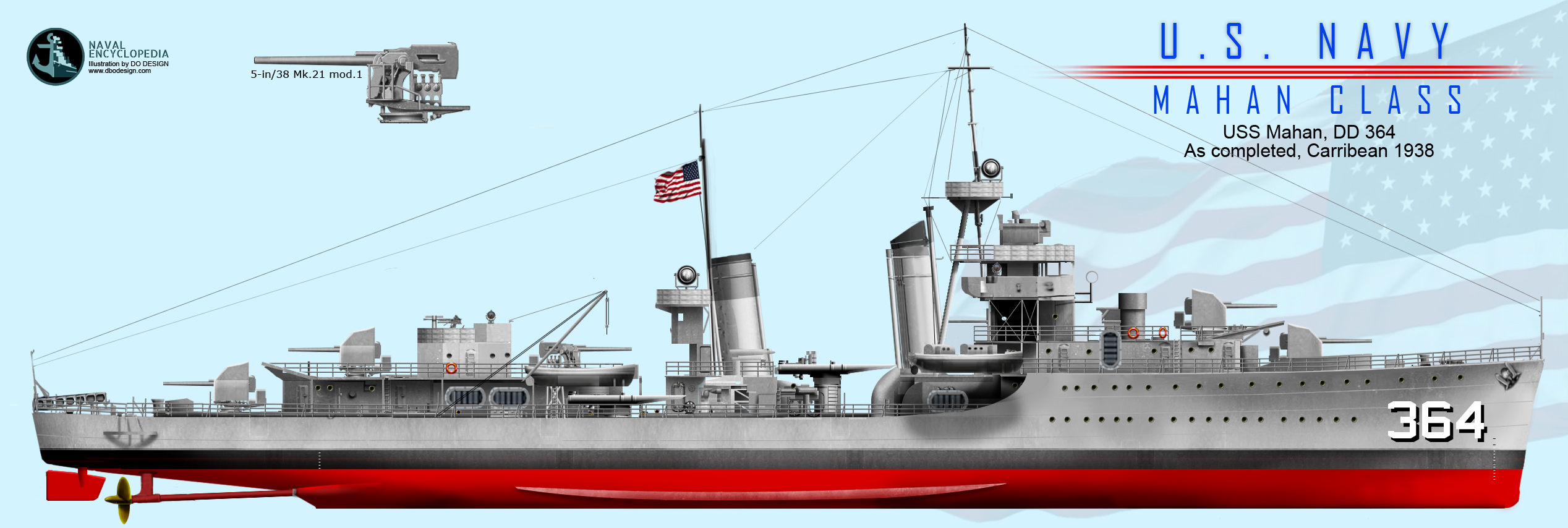
HD rendition of USS Mahan, as commissioned in 1938. Note the tripod foremast and pole mainmast aft od the funnel. In 1939 this one was removed and replaced by small half-mast aft of the funnel. Standard Ocean Grey and large pennant markings were the norm as through the neutrality patrols of 1941.
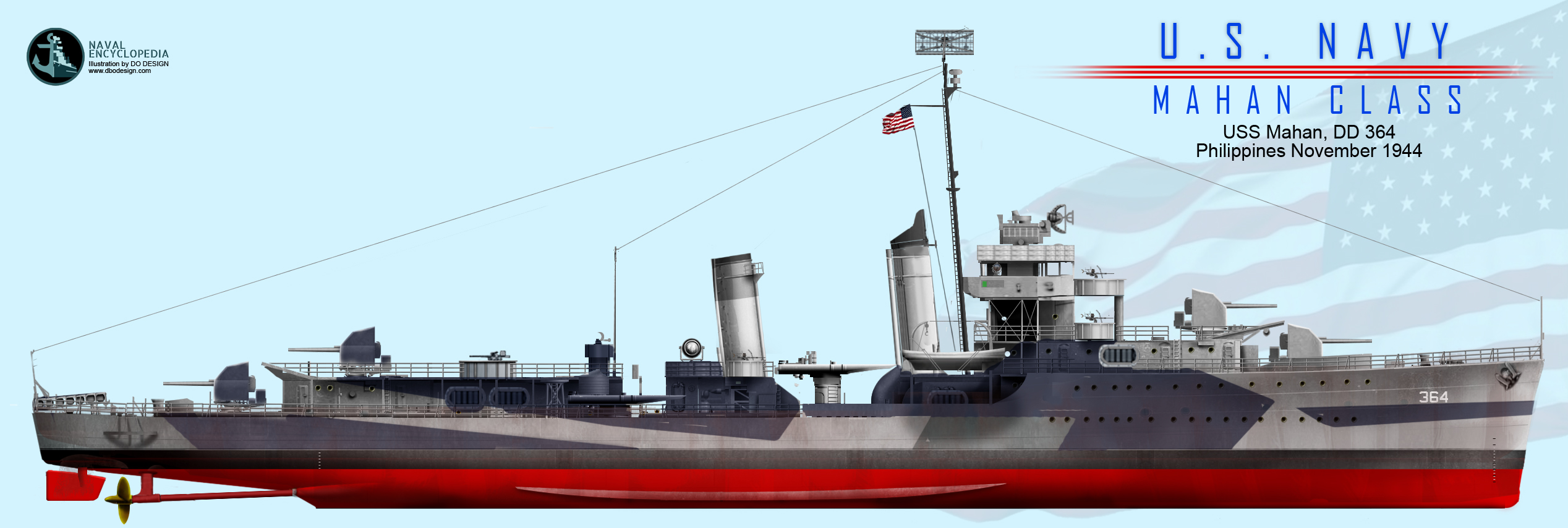
Same ship, different timeline, showing her wartime modifications by late 1944 in the Philippines, shortly before she was attacked by Kamikazes (and sunk).
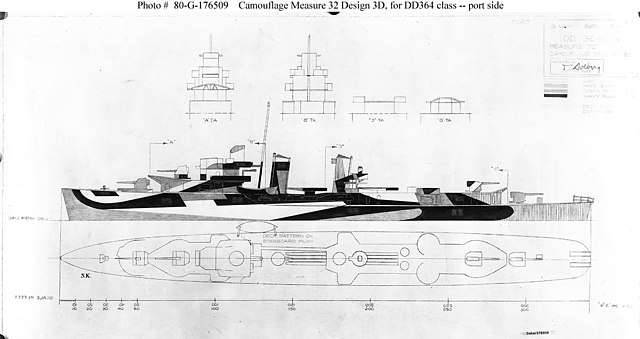
ONI pattern sheet MS-32, 3D for the Mahan class, port view.
⚙ Mahan class specifications |
|
| Displacement | 1,500 long tons standard 1,725 long tons (1,753 t) deep load (2,103 1945) |
| Dimensions | 341 feet 3 inches x 35 feet 6 inches x 10 feet 7 inches (104 x 10.8 x 3.2 m) |
| Propulsion | 2 GE GS turbines, 4 boilers B&W/Forster, 46,000 shp (34,000 kW) |
| Speed | 37 knots (69 km/h) |
| Range | 6,940 nmi (12,850 km; 7,990 mi) at 12 knots (22 km/h; 14 mph) |
| Armament | 5×5-in/38 guns, 3×4 21-in TTs, 4x 0.5 in cal. M2HB AA, 2 DCR |
| Sensors | Mk33 GFCS, SC radar, see notes |
| Crew | 158 (peacetime) 250 (wartime) |
General Assessment of the class
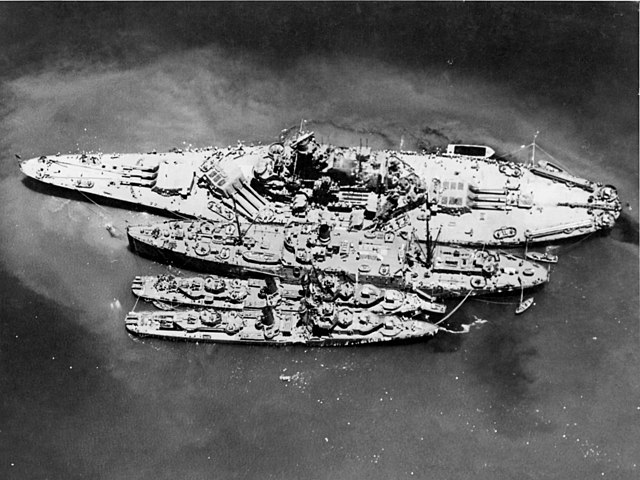
USS South Dakota alongside USS Prometheus (AR-3) and two Mahan class DDs off North Africa, November 1942
Design wise, with a brand new, innovative machinery offering many innovations and advantages, and 12 torpedo tubes, plus their superimposed gun shelters as well as generators, the 135 tons increase over the Farraguts seems well used overall. The class was capable to raise steam faster, being more efficient and thus, having a better range, requiring less maintenance-intensive machinery (which went with lesser skilled specialists). The Mahans became therefore the new standard for US destroyers. The Farraguts, top-heavy and unwieldy, certainly paled in comparison. This design evolution however was not “in-house” but rather the external contrution of Gibbs & Cox flair for innovative machinery.
If transatlantic liners can have the world’s best machinery systems (which was often the case) these ships were seen very much as showcases of national tech. So why not make the best of US taxpayers by recycling these to the military. The advance taken by the USN in that matter (to compare with other fleets) also explains in part why US WW2 destroyers in general saw so much useful post-war service, for some until the 1990s. The base principe was kept with constant improvements between the Fletcher, Sumner and Gearings.
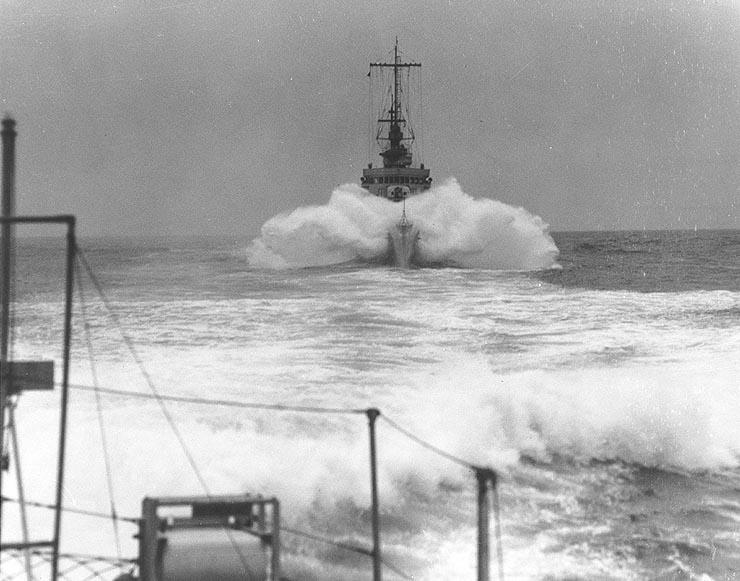
USS Perkins dealing with heavy weather, date unknown
All 18 ships saw action in World War II and all in the Pacific Theater (after some service in the Mediterranean/Atlantic). They saw the most important engagements of the war (unlike for the exmple the numerous Fletcher class), and that included the Guadalcanal Campaign, battle of the Santa Cruz Islands, Battle of Leyte Gulf, and battle of Iwo Jima. They were “do-it-all-ships”, always on the breach for a variety of missions, between beachhead bombardment, close cover of amphibious landings, and traditional task force screening as well as convoy and patrols. She were tasked for anti-aircraft cover when integrated with task forces, and submarine warfare when detached in waters surrounding the area of operations (usually atolls and island coasts).
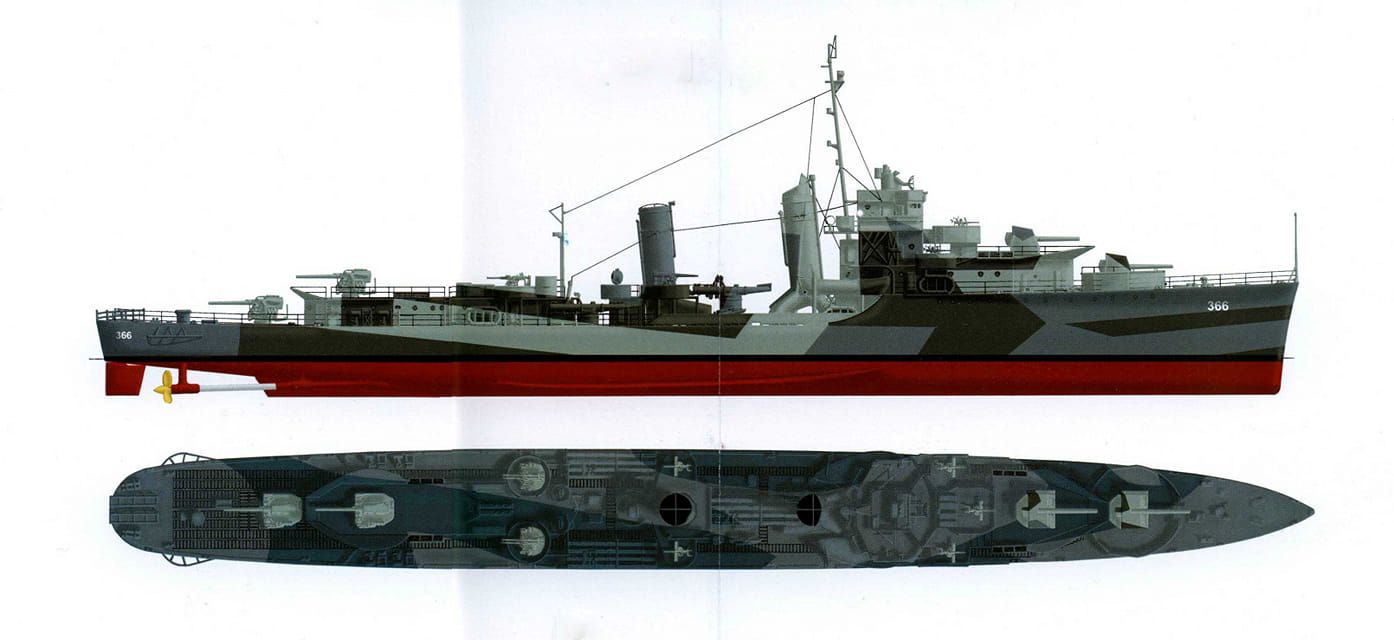
DD-366 in 1944
Six were lost in action (plus two expended in Operation Crossroads nuclear tests). The remainder were all scrapped due to their age conception, but they still saw reasonable service of about ten years before commission in 1936 and 1946-48 retirement. Ten years was short, still for taxpayer’s money. But their wartime service was particularly intense, and they chronically lacked proper maintenance, and having heavy use of her equipments and powerplant in particular, despite their innovative nature.
In short: In 1945 they were worn out. None survived today precisely because of this early retirement. Only the Fletcher class generation served long enough in the cold war to generate such preservation interest (and a new context, with more cash and veteran’s weight in the society for such enterprises). This was no a thing back post-WW2. Collectively their 111 battle stars testify this long, intense, even relentless World War II service. With one third of the class lost in action, this was indeed a rather high ratio for USN Destroyers.
Read More
Books
Bauer, K. Jack; Roberts, Stephen S. (1991). Register of Ships of the U.S. Navy, 1775–1990. Greenwood Press.
Friedman, Norman (2004). U.S. Destroyers. Annapolis, MD: Naval Institute Press.
Gardiner, Robert; Chesneau, Roger (1980). Conway’s All the World’s Fighting Ships 1922–1946.
Hodges, Peter; Friedman, Norman, eds. (1979). Destroyer Weapons of World War 2. NIP
McComb, Dave (2010). US Destroyers 1934–1945. Long Island City, New York: Osprey Publishing.
Reilly, John (1983). United States Navy Destroyers of World War II. Blandford Press.
Rohwer, Jürgen (2005). Chronology of the War at Sea, 1939–1945: The Naval History of World War Two. NIP
Rohwer, Jürgen; Hümmelchen, Gerhard (1992). Chronology of the War at Sea 1939–1945. NIP
Roscoe, Theodore (1953). United States Destroyer Operations in World War II. NIP
Silverstone, Paul H. (1965). U.S. Warships of World War II. London: Ian Allan Ltd.
Links
https://en.wikipedia.org/wiki/Mahan-class_destroyer
http://www.navypedia.org/ships/usa/us_dd_mahan.htm
http://pwencycl.kgbudge.com/M/a/Mahan_class.htm
http://www.microworks.net/pacific/ships/destroyers/mahan.htm
http://www.tincansailors.org/ShipsStore/profiles/conf%20XX-Mahan%20as%20modified.htm
https://lcoat.tripod.com/shipdraw.htm
https://alchetron.com/USS-Cushing-%28DD-376%29
https://maritime.org/doc/plans/index.php
Full plans set on maritime.org/
Videos
Model Kits

General Query on scalemates
Unlike WW1 USN DDs, the choice of kits for the Mahan class is a bit better, but just: Let’s cite USS Conyngham DD-371 by Iron Shipwrights at 1:350, USS Mahan DD-364 1942 by MidShip Models 1:700 which also done the USS Dunlap DD-384 1938 and the Rebuilt Mahan Class USS Cassin DD-372 in 1943. There is also a 1-700-194-MHN USS Mahan 1941 by Kraken Hobbies 1:700. Model Monlay fo thos tempted by 1:72 scratch made a 5″/38 cal. “Single Knuckle” Mount, early Mk.30 single-gun mount. Model Monkey 1:72 XP Forge also made its 1:1200 for wargaming.
As for books, the USS Cushing DD-376 by Model Monkey and USS Cushing DD-376 US Navy Booklet of General Plans, official US Navy in new 2022 Digital form, as USS Flusser DD-368 US Navy Booklet of General Plans from Federal Shipbuilding, Drydock Company and naval yard for a nice large scratchbuilt base.
The Mahan class destroyers in service
 USS Mahan DD-364
USS Mahan DD-364
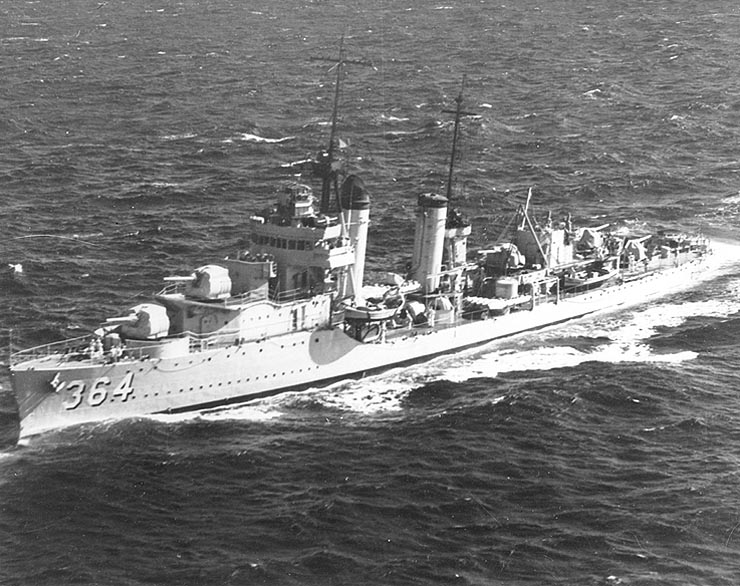
USS Mahan (DD-364) was commissioned on September 2, 1936, named after Rear Admiral Alfred Thayer Mahan, the prominent naval strategist, historian, naval academy professor and president. His works and legacy are still with us today.
She will be an example of career for the whole class, seen here in detail: USS Mahan was built by United Dry Docks of Staten Island, New York, he keel laid down on 12 June 1934, launched on 15 October 1935 (Christened by the admiral’s great-granddaughter), commissioned on 18 September 1936. She made the usual Caribbean initial training and shakedown touring South American ports for two months and only came back in July 1937 to Southern California, having rounded the cape. She took part in fleet training and was assigned to Pearl Harbor.
Nothing mych happened but her routine of yearly exercizes and upkeep on the Californian coast in 1937-41, while tension was mounting with Japan. Thus, she was kept to Pearl Harbor aven after the start of WW2 and transfer of many destroyers to the Atlantic for neutrality patrols. On 7 December 1941 under Commander R. W. Simpson, she was screening for task force 12 centered around USS Lexington, with three cruisers and four destroyers ferrying aircraft to reinforce Midway Island. Soon after they were dispatched TF 12 was asked to search for the Japanese and after failing to find them, were back in Pearl on 12 December.
Later in December, Mahan was detached with 103 Marines aboard landed on Johnston Island (about 750 nm west of Hawaii) while evacuating 47 natives and residents to Hawaii. Next Mahan was sent to escort a convoy to Samoa with Task Force 17 (USS Yorktown). TF 17 also raided Jaluit Atoll, Mili Atoll and Makin Atoll (Marshall-Gilberts). USS Mahan was off Canton Island by late February 1942 for patrol. In early April she escorted a Pearl Harbor convoy back to for San Pedro in California. She was directed to Mare Island Naval Shipyard for her first major wartime overhaul on the 18th.
Battle of Santa Cruz Islands
Back in Pearl Harbor in August 1942, after patrolling these waters by mid-October she was assigned Task Force 16 (USS Enterprise) also comprising USS South Dakota, two cruisers and seven destroyers. They were soon amalgamated with TF 17 (USS Hornet) as Task Force 61 (RADM Thomas C. Kinkaid) sent to Santa Cruz Islands to prevent the invasion of Guadalcanal.
On 26 October, Enterprise’s search planes spotted and attacked IJN Zuiho starting the Battle of the Santa Cruz Islands in motion. This first air-sea battle ended a bit as pyrrhic, but the screening destroyers, including Mahan, put up a fierce AA defence and were commended for their effort. Next, Mahan was sent with the fleet to Noumea, New Caledonia. On 27 October while underway a Japanese submarine was detacted and the convoy took evasive action but when it happened, USS Mahan and South Dakota collided, with quite extensive damage. She received temporary repairs at Noumea enough to proceed to Pearl Harbor where she received a new bow.
New Guinea Campaign
On 9 January 1943 she was back in action in the South Pacific, escorting convoys between the New Hebrides and Fiji while based off New Caledonia for the Guadalcanal Campaign. She visited and operated in Australian waters and in August she was based in Milne Bay, New Guinea. In August 1943, under Lieutenant Commander James T. Smith she was part of a strike on Lae, with three other US destroyers, bombarding Japanese installations at Finschhafen. The Lae Task Force (RADM Daniel E. Barbey) left Milne Bay for Lae with 8,000 Australian troops and landed them up to 4 September. On the 11th Salamaua and on the 16th Lae were recaptured, Mahan covering the landings and patrolling the area.
On 21 September she escorted another force from Buna, and carried an Australian infantry brigade herself. On the 22th, she was part of the attack on Finschhafen and soon withdrawed from the area when ten Japanese torpedo planes attacked. Theor combined AA fire downed eight of the ten. On 14 December 1943 she left Buna again to take part in the landing at Arawe in New Britain. She was part of the bombardment with four other destroyers. The force arrived off Arawe on the 15th, proceeded to the bombardement, forcing the Japanese to retreat.
On Christmas 1943 Mahan was sailing to Borgen Bay (Cape Gloucester, New Britain), meeting uncharted waters and with USS Flusser she was sent to sound out the channel. Two minesweepers layed buoys to create a path. On 26th, the Marines landed, and the afternoon the force repelled an attack. Later in February 1944, Mahan was assigned the 7th Flee covering a landing at Los Negros Island (Admiralty). However in March she was sent home for another overhaul at Mare Island Naval Shipyard, with extensive modifications. She left in July 1944 for Pearl Harbor and after refreshing exercises until 15 August she was sent to New Guinea on 20 October via Eniwetok, Jaluit, Guam, Saipan and Ulithi and escorting convoys towards Leyte. By late November 1944, she was patrolling Leyte waters.
Battle of Leyte and loss
Mahan was soon assigned the amphibious attack force on Ormoc. By the morning of 7 December 1944, she escorted the troopships carrying the 77th Infantry Division until they landed and patrolled the channel between Leyte and Ponson Island. Nine Japanese bombers and four escort fighters soon arrived on the scene and attacked the force, including Mahan, soon targeted by one of the first Kamikaze attacks, after the torpedoes had been launched. USS Mahan by that time had a strong AA and managed to shoot down four attackers but soon took three direct kamikaze hits, the most serious being a hit to her superstructure, near No.2 gun, decapitating her command.
In flames, Mahan was was ordered by Commander E. G. Campbell, which survived, toward the picket line in order to save her but soon order to abandon ship. She was assisted by USS Lamson and Walke, rescuing survivors. She had six missing, 30 seriously wounded, and she had to be finished off by torpedoes and gunfire. Her captain praised how his crew managed with the situation. She would receive received five battle stars for her service.
⚠ NOTE: The following career records has been generated using ChatGPT as a test. Enjoy (grin)
 USS Cummings DD-365
USS Cummings DD-365
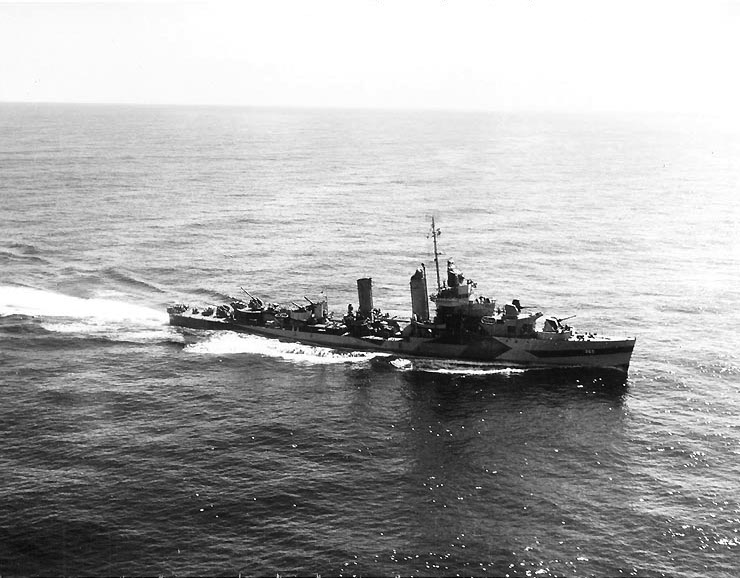
USS Cummings (DD-365) was commissioned on April 28, 1936, named after Andrew Boyd Cummings, a naval officer who served during the Spanish-American War and World War I.
During World War II, Cummings served in the Pacific theater, participating in the Battle of Midway, the Guadalcanal campaign, the Battle of the Eastern Solomons, and the Battle of the Santa Cruz Islands. She also took part in the Aleutian Islands campaign and the Battle of Leyte Gulf.
In 1945, Cummings was assigned to the Atlantic Fleet and participated in the invasion of southern France. She earned 11 battle stars for her service during World War II.
After the war, Cummings served as a training ship and was eventually decommissioned in 1947. She was sold for scrap in 1948.
 USS Drayton DD-366
USS Drayton DD-366

USS Drayton (DD-366) was commissioned on October 9, 1936. She was named after Percival Drayton, a naval officer who served during the American Civil War.
During World War II, Drayton served in the Pacific theater, participating in the Battle of Midway, the Guadalcanal campaign, and the Battle of the Eastern Solomons. She also took part in the Aleutian Islands campaign and the Battle of Leyte Gulf.
In 1945, Drayton was assigned to the Atlantic Fleet and participated in the invasion of southern France. She earned 12 battle stars for her service during World War II.
After the war, Drayton served as a training ship and was eventually decommissioned in 1947. She was sold for scrap in 1948.
 USS Lamson DD-367
USS Lamson DD-367
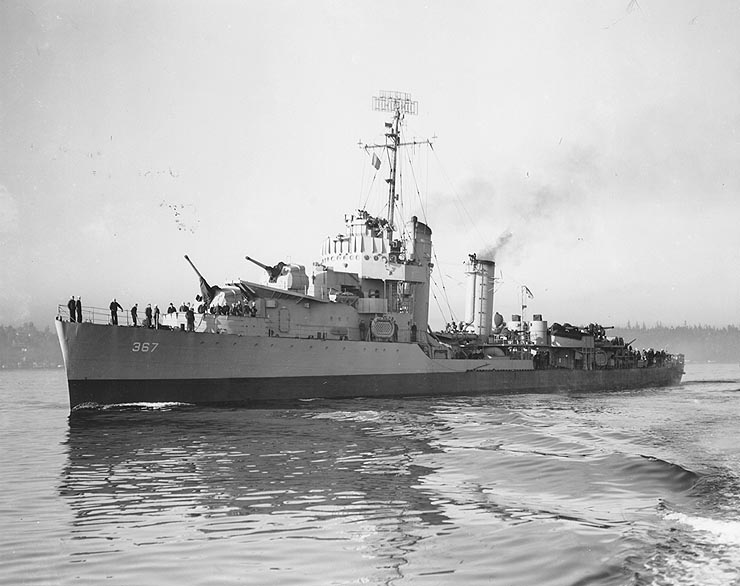
USS Lamson (DD-367) was commissioned on November 20, 1936. She was named after Roswell H. Lamson, a naval officer who served during the American Civil War and the Spanish-American War.
During World War II, Lamson served in the Pacific theater, participating in the Battle of Midway, the Guadalcanal campaign, the Battle of the Eastern Solomons, and the Battle of the Santa Cruz Islands. She also took part in the Aleutian Islands campaign, the Battle of Leyte Gulf, and the Battle of Okinawa.
In 1945, Lamson was assigned to the Atlantic Fleet and participated in the invasion of southern France. She earned 11 battle stars for her service during World War II.
After the war, Lamson served as a training ship and was eventually decommissioned in 1947. She was sold for scrap in 1948.
 USS Flusser DD-368
USS Flusser DD-368
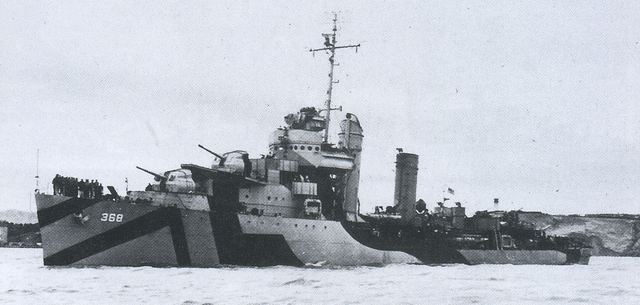
USS Flusser (DD-368) was commissioned on November 2, 1936. She was named after Charles W. Flusser, a naval officer who served during the American Civil War.
During World War II, Flusser served in the Pacific theater, participating in the Battle of Midway, the Guadalcanal campaign, the Battle of the Eastern Solomons, and the Battle of the Santa Cruz Islands. She also took part in the Aleutian Islands campaign, the Battle of Leyte Gulf, and the Battle of Okinawa.
In 1945, Flusser was assigned to the Atlantic Fleet and participated in the invasion of southern France. She earned 11 battle stars for her service during World War II.
After the war, Flusser served as a training ship and was eventually decommissioned in 1947. She was sold for scrap in 1948.
 USS Reid DD-369
USS Reid DD-369
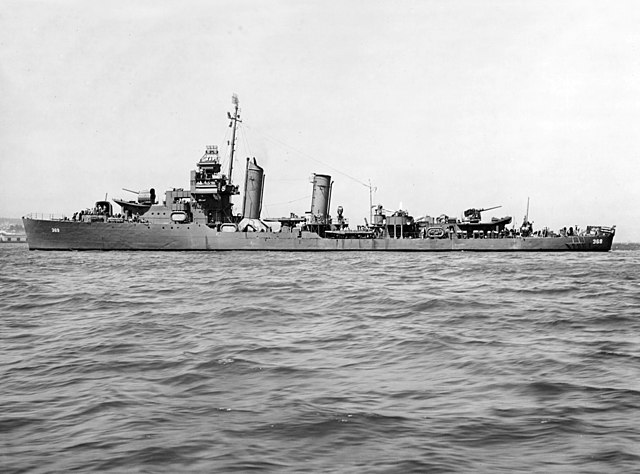
USS Reid (DD-369) was commissioned on December 30, 1936. She was named after Samuel Chester Reid, a naval officer who served during the War of 1812.
During World War II, Reid served in the Pacific theater, participating in the Battle of Midway, the Guadalcanal campaign, the Battle of the Eastern Solomons, and the Battle of the Santa Cruz Islands. She also took part in the Aleutian Islands campaign, the Battle of Leyte Gulf, and the Battle of Okinawa.
In 1945, Reid was assigned to the Atlantic Fleet and participated in the invasion of southern France. She earned 13 battle stars for her service during World War II.
After the war, Reid served as a training ship and was eventually decommissioned in 1947. She was sold for scrap in 1948.
 USS Case DD-370
USS Case DD-370

USS Case (DD-370) was commissioned on March 8, 1937. She was named after Augustus Ludlow Case, a naval officer who served during the American Civil War.
During World War II, Case served in the Pacific theater, participating in the Battle of Midway, the Guadalcanal campaign, the Battle of the Eastern Solomons, and the Battle of the Santa Cruz Islands. She also took part in the Aleutian Islands campaign, the Battle of Leyte Gulf, and the Battle of Okinawa.
In 1945, Case was assigned to the Atlantic Fleet and participated in the invasion of southern France. She earned 11 battle stars for her service during World War II.
After the war, Case served as a training ship and was eventually decommissioned in 1947. She was sold for scrap in 1948.
 USS Conyngham DD-371
USS Conyngham DD-371
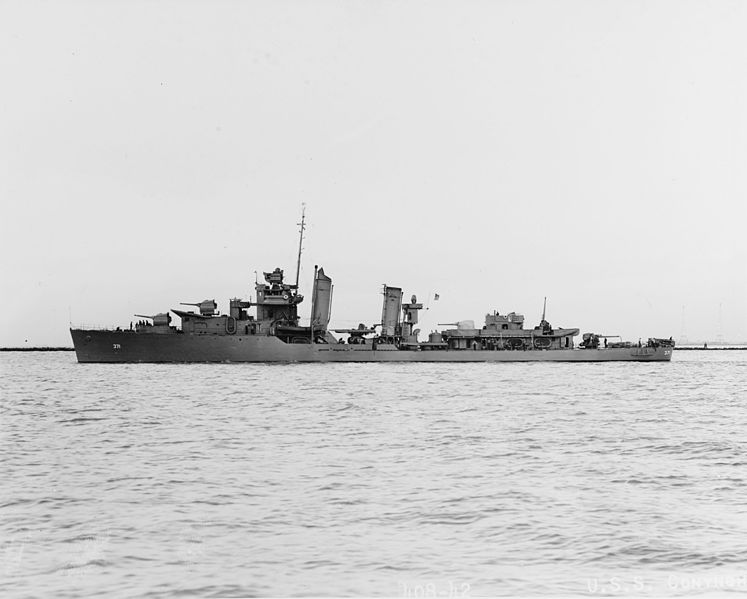
USS Conyngham (DD-371) was commissioned on March 19, 1937. She was named after Gustavus Conyngham, a naval officer who served during the American Revolutionary War.
During World War II, Conyngham served in the Pacific theater, participating in the Battle of Midway, the Guadalcanal campaign, the Battle of the Eastern Solomons, and the Battle of the Santa Cruz Islands. She also took part in the Aleutian Islands campaign, the Battle of Leyte Gulf, and the Battle of Okinawa.
In 1945, Conyngham was assigned to the Atlantic Fleet and participated in the invasion of southern France. She earned 13 battle stars for her service during World War II.
After the war, Conyngham served as a training ship and was eventually decommissioned in 1947. She was sold for scrap in 1948.
 USS Cassin DD-372
USS Cassin DD-372
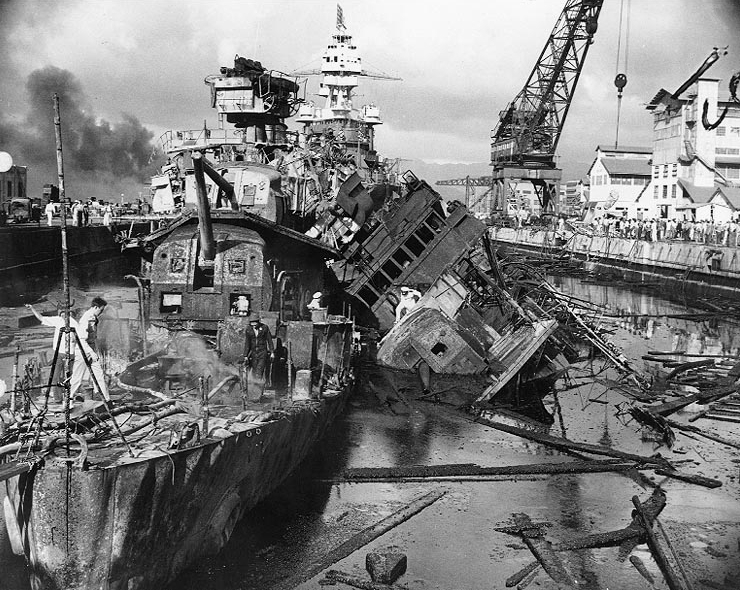
USS Cassin (DD-372) was commissioned on April 21, 1937. She was named after Stephen Cassin, a naval officer who served during the War of 1812.
During World War II, Cassin served in the Atlantic theater, participating in the Neutrality Patrol, the invasion of North Africa, the invasion of Sicily, and the invasion of Italy. She also took part in the Normandy landings and the invasion of southern France.
Cassin was heavily damaged during the Normandy landings when she was hit by a German shore battery. She was repaired and returned to service in 1944. She earned six battle stars for her service during World War II.
After the war, Cassin served as a training ship and was eventually decommissioned in 1946.
 USS Shaw DD-373
USS Shaw DD-373
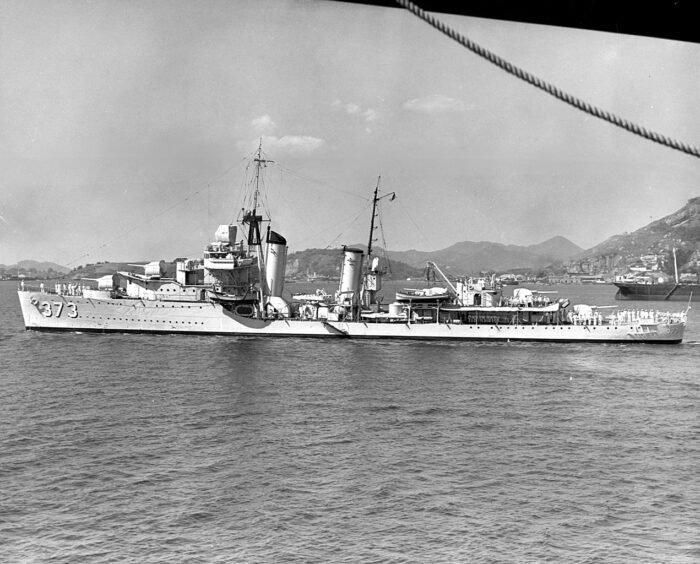
USS Shaw (DD-373) was commissioned on September 3, 1936. She was named after John Shaw, a naval officer who served during the Barbary Wars.
During World War II, Shaw served in the Pacific theater, participating in the Battle of Midway, the Guadalcanal campaign, and the Battle of the Santa Cruz Islands. She also took part in the Aleutian Islands campaign, the Battle of the Philippine Sea, and the Battle of Leyte Gulf.
On December 7, 1941, Shaw was moored at Pearl Harbor when the Japanese launched a surprise attack on the base. She was hit by three bombs and her forward magazine exploded, causing extensive damage. Despite the damage, Shaw was repaired and returned to service in 1942.
Shaw earned six battle stars for her service during World War II. After the war, she was decommissioned in 1945 and sold for scrap in 1946.
 USS Tucker DD-374
USS Tucker DD-374
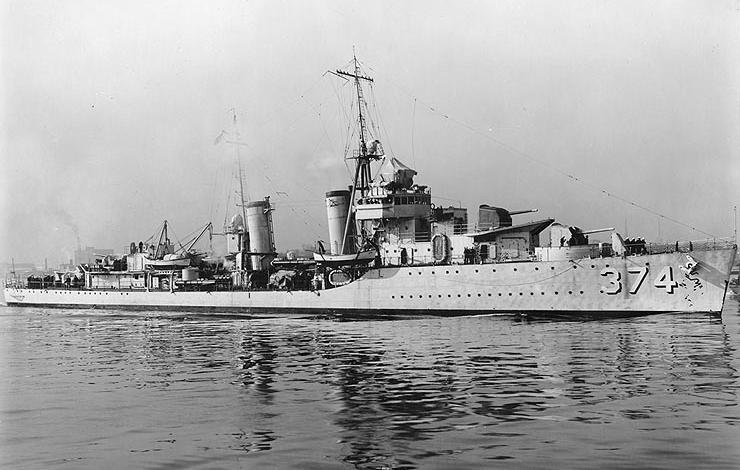
USS Tucker (DD-374) was commissioned on August 26, 1936. She was named after Samuel Tucker, a naval officer who served during the American Revolutionary War.
During World War II, Tucker served in the Pacific theater, participating in the Guadalcanal campaign, the Battle of the Eastern Solomons, and the Battle of the Santa Cruz Islands. She also took part in the Aleutian Islands campaign, the Battle of the Philippine Sea, and the Battle of Leyte Gulf.
Tucker was awarded nine battle stars for her service during World War II. Decommissioned in 1945 she was sold for scrap in 1946.
 USS Downes DD-375
USS Downes DD-375
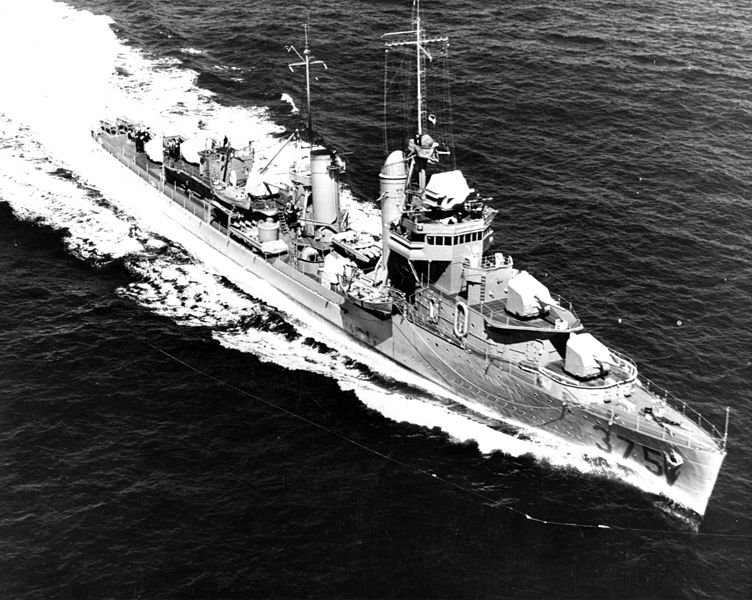
USS Downes (DD-375) was launched on May 31, 1935, and commissioned on November 24 of the same year.
During World War II, Downes served in the Pacific theater and participated in numerous campaigns, including the Battle of Midway in June 1942. On December 7, 1941, Downes was undergoing overhaul at the Pearl Harbor Navy Yard when the Japanese attacked. The ship was heavily damaged by bombs and torpedoes, and was later deemed to be beyond repair.
Downes was decommissioned on January 15, 1942, and her hulk was stripped of salvageable parts. The remnants were later used as a target for aerial bombing practice.

 USS Cushing DD-376
USS Cushing DD-376
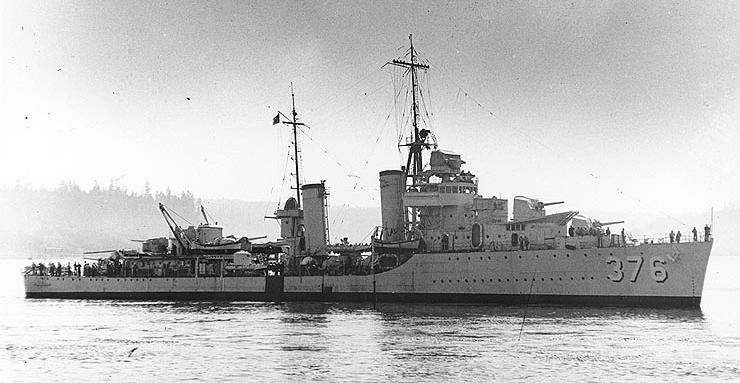
USS Cushing (DD-376) was named after William Barker Cushing, a Union Navy officer who was awarded the Medal of Honor for his actions during the Civil War.
The USS Cushing was launched on November 1, 1935, and commissioned on December 19, 1936. It was armed with five 5-inch guns, four .50-caliber machine guns, and eight 21-inch torpedo tubes. The ship had a top speed of 36.5 knots and a range of 6,940 nautical miles at a speed of 12 knots.
During World War II, the USS Cushing participated in numerous operations in the Pacific Theater, including the Battle of Midway, the Guadalcanal Campaign, and the Battle of the Eastern Solomons. On November 13, 1942, while on a mission to protect a convoy near Guadalcanal, the USS Cushing was hit by a torpedo fired by the Japanese submarine I-AS. The ship sank within minutes, with the loss of 77 crew members.
The USS Cushing received four battle stars for its service in World War II. In 1944, the Navy commissioned a new destroyer, USS Cushing (DD-797), which was named after the original USS Cushing.
 USS Perkins DD-377
USS Perkins DD-377
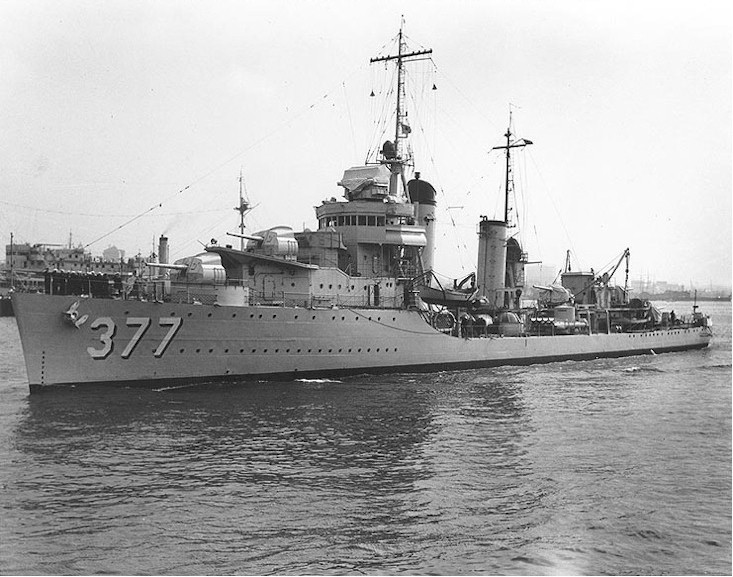
USS Perkins (DD-377) was named after George Hamilton Perkins, a U.S. Navy officer who served during the Spanish-American War and was later a U.S. Senator from California.
The USS Perkins was launched on December 1, 1935, and commissioned on January 20, 1937. It was armed with five 5-inch guns, four .50-caliber machine guns, and eight 21-inch torpedo tubes. The ship had a top speed of 36.5 knots and a range of 6,940 nautical miles at a speed of 12 knots.
During World War II, the USS Perkins participated in numerous operations in the Pacific Theater, including the Battle of Midway, the Guadalcanal Campaign, and the Battle of the Eastern Solomons. In October 1942, the USS Perkins was part of a task force that engaged in the Battle of Cape Esperance, during which it helped sink the Japanese cruiser Furutaka.
The USS Perkins also participated in the battles of Santa Cruz and Tassafaronga, and provided gunfire support for the landings on Bougainville, the Marianas, and the Philippines. The ship was awarded five battle stars for its service in World War II.
After the war, the USS Perkins was decommissioned on December 3, 1945, and sold for scrap on December 19, 1946.
 USS Smith DD-378
USS Smith DD-378
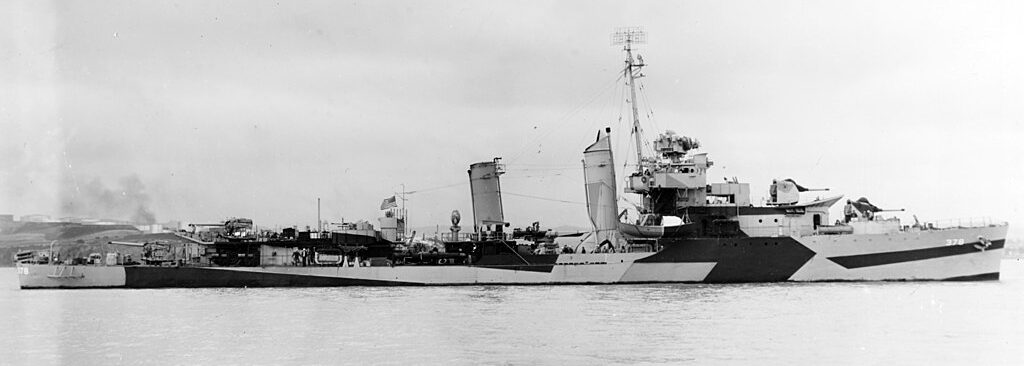
Off Mare Island Naval Shipyard, 12 June 1944
USS Smith (DD-378) was named after Joseph W. Smith, a U.S. Navy officer who served during the Spanish-American War and was later awarded the Medal of Honor for his actions during the Boxer Rebellion in China.
The USS Smith was launched on February 10, 1936, and commissioned on August 25, 1936. It was armed with five 5-inch guns, four .50-caliber machine guns, and eight 21-inch torpedo tubes. The ship had a top speed of 36.5 knots and a range of 6,940 nautical miles at a speed of 12 knots.
During World War II, the USS Smith participated in numerous operations in the Pacific Theater, including the Battle of Midway, the Guadalcanal Campaign, and the Battle of the Eastern Solomons. In October 1942, the USS Smith was part of a task force that engaged in the Battle of Cape Esperance, during which it helped sink the Japanese cruiser Furutaka.
The USS Smith also participated in the battles of Santa Cruz, Tassafaronga, and the Philippine Sea. It was awarded six battle stars for its service in World War II.
After the war, the USS Smith was decommissioned on December 16, 1945, and sold for scrap on December 19, 1946.
 USS Preston DD-379
USS Preston DD-379

USS Preston (DD-379) was named after Samuel W. Preston, a U.S. Navy officer who served during the Mexican-American War and was later the Superintendent of the United States Naval Academy.
The USS Preston was launched on April 4, 1936, and commissioned on September 22, 1936. It was armed with five 5-inch guns, four .50-caliber machine guns, and eight 21-inch torpedo tubes. The ship had a top speed of 36.5 knots and a range of 6,940 nautical miles at a speed of 12 knots.
During World War II, the USS Preston participated in numerous operations in the Pacific Theater, including the Battle of Midway, the Guadalcanal Campaign, and the Battle of the Eastern Solomons. In October 1942, the USS Preston was part of a task force that engaged in the Battle of Cape Esperance, during which it helped sink the Japanese cruiser Furutaka.
The USS Preston also participated in the battles of Santa Cruz, Tassafaronga, and the Philippine Sea. It was awarded six battle stars for its service in World War II.
After the war, the USS Preston was decommissioned on December 16, 1945, and sold for scrap on December 19, 1946.
 USS Dunlap DD-384
USS Dunlap DD-384
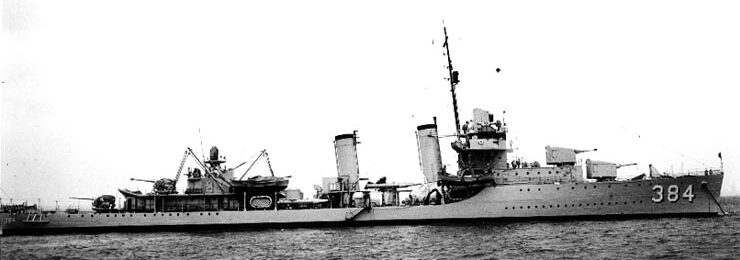
USS Dunlap (DD-384) was named after Robert Dunlap, a U.S. Navy officer who served during the Spanish-American War and was later the commander of the gunboat USS Petrel during the Philippine-American War.
The USS Dunlap was launched on December 27, 1934, and commissioned on March 25, 1936. It was armed with five 5-inch guns, four .50-caliber machine guns, and eight 21-inch torpedo tubes. The ship had a top speed of 36.5 knots and a range of 6,500 nautical miles at a speed of 12 knots.
During World War II, the USS Dunlap participated in numerous operations in the Pacific Theater, including the Battle of Midway, the Guadalcanal Campaign, and the Battle of the Eastern Solomons. In October 1942, the USS Dunlap was part of a task force that engaged in the Battle of Cape Esperance, during which it helped sink the Japanese cruiser Furutaka.

The USS Dunlap also participated in the battles of Santa Cruz, Tassafaronga, and the Philippine Sea. It was awarded nine battle stars for its service in World War II.
After the war, the USS Dunlap was decommissioned on November 25, 1945, and sold for scrap on January 22, 1948.
 USS Fanning DD-385
USS Fanning DD-385
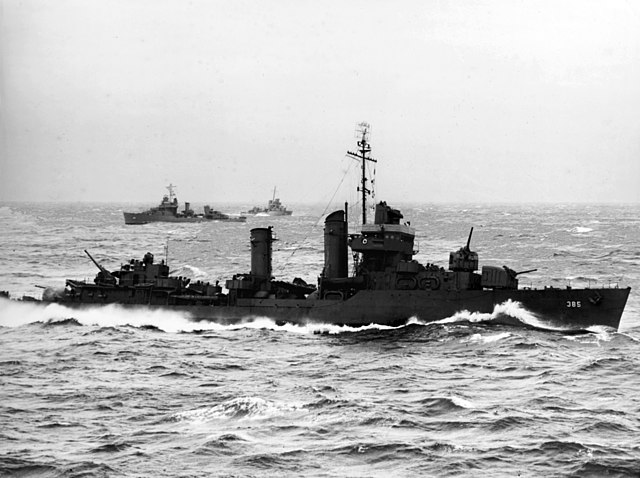
USS Fanning (DD-385) was named after Nathaniel Fanning, a U.S. Navy officer who served during the American Revolutionary War and was captured by the British.
The USS Fanning was launched on October 15, 1934, and commissioned on March 15, 1936. It was armed with five 5-inch guns, four .50-caliber machine guns, and eight 21-inch torpedo tubes. The ship had a top speed of 36.5 knots and a range of 6,500 nautical miles at a speed of 12 knots.
During World War II, the USS Fanning participated in numerous operations in the Pacific Theater, including the Battle of Midway, the Guadalcanal Campaign, and the Battle of the Eastern Solomons. In October 1942, the USS Fanning was part of a task force that engaged in the Battle of Cape Esperance, during which it helped sink the Japanese cruiser Furutaka.
The USS Fanning also participated in the battles of Santa Cruz, Tassafaronga, and the Philippine Sea. It was awarded nine battle stars for its service in World War II.
After the war, the USS Fanning was decommissioned on November 25, 1945, and sold for scrap on January 22, 1948.

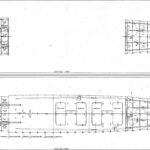
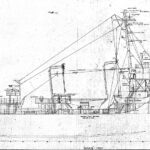
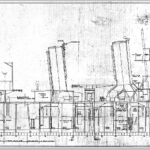
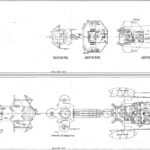
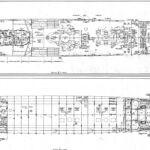
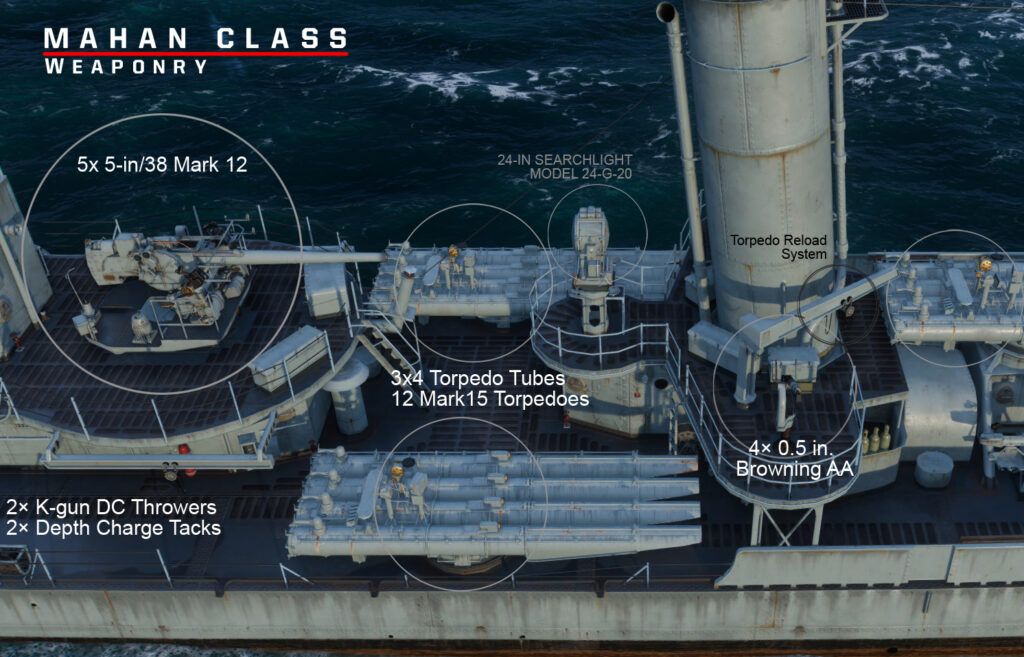

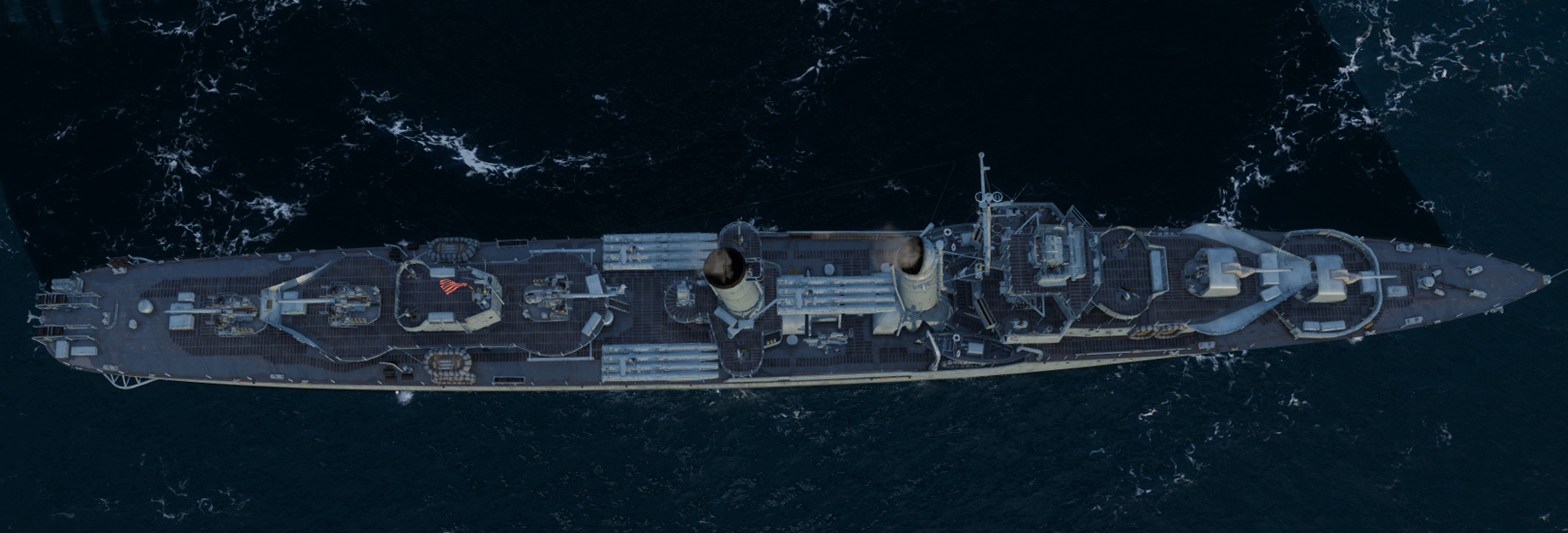
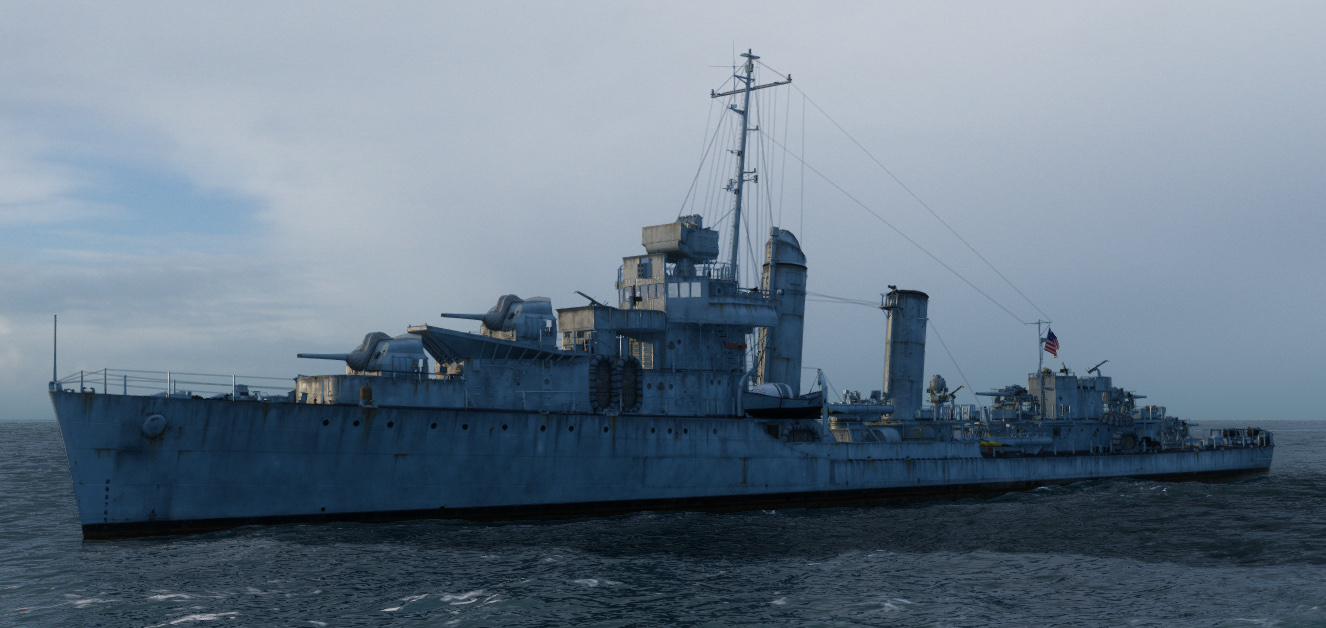
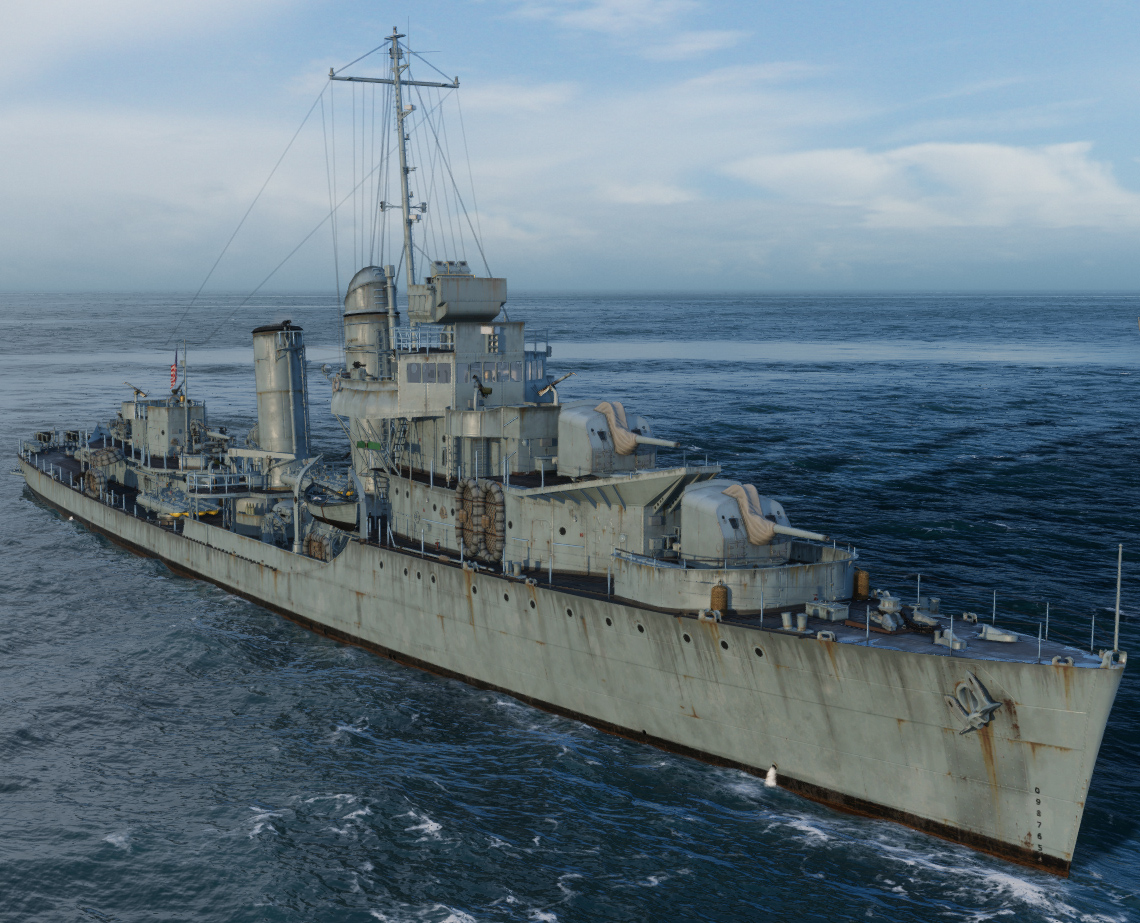


 Latest Facebook Entry -
Latest Facebook Entry -  X(Tweeter) Naval Encyclopedia's deck archive
X(Tweeter) Naval Encyclopedia's deck archive Instagram (@navalencyc)
Instagram (@navalencyc)





 French Navy
French Navy Royal Navy
Royal Navy Russian Navy
Russian Navy Armada Espanola
Armada Espanola Austrian Navy
Austrian Navy K.u.K. Kriegsmarine
K.u.K. Kriegsmarine Dansk Marine
Dansk Marine Nautiko Hellenon
Nautiko Hellenon Koninklije Marine 1870
Koninklije Marine 1870 Marinha do Brasil
Marinha do Brasil Osmanlı Donanması
Osmanlı Donanması Marina Do Peru
Marina Do Peru Marinha do Portugal
Marinha do Portugal Regia Marina 1870
Regia Marina 1870 Nihhon Kaigun 1870
Nihhon Kaigun 1870 Preußische Marine 1870
Preußische Marine 1870 Russkiy Flot 1870
Russkiy Flot 1870 Svenska marinen
Svenska marinen Søværnet
Søværnet Union Navy
Union Navy Confederate Navy
Confederate Navy Armada de Argentina
Armada de Argentina Imperial Chinese Navy
Imperial Chinese Navy Marinha do Portugal
Marinha do Portugal Mexico
Mexico Kaiserliche Marine
Kaiserliche Marine 1898 US Navy
1898 US Navy Sovietskiy Flot
Sovietskiy Flot Royal Canadian Navy
Royal Canadian Navy Royal Australian Navy
Royal Australian Navy RNZN Fleet
RNZN Fleet Chinese Navy 1937
Chinese Navy 1937 Kriegsmarine
Kriegsmarine Chilean Navy
Chilean Navy Danish Navy
Danish Navy Finnish Navy
Finnish Navy Hellenic Navy
Hellenic Navy Polish Navy
Polish Navy Romanian Navy
Romanian Navy Turkish Navy
Turkish Navy Royal Yugoslav Navy
Royal Yugoslav Navy Royal Thai Navy
Royal Thai Navy Minor Navies
Minor Navies Albania
Albania Austria
Austria Belgium
Belgium Columbia
Columbia Costa Rica
Costa Rica Cuba
Cuba Czechoslovakia
Czechoslovakia Dominican Republic
Dominican Republic Haiti
Haiti Hungary
Hungary Honduras
Honduras Estonia
Estonia Iceland
Iceland Eire
Eire Equador
Equador Iran
Iran Iraq
Iraq Latvia
Latvia Liberia
Liberia Lithuania
Lithuania Mandchukuo
Mandchukuo Morocco
Morocco Nicaragua
Nicaragua Persia
Persia San Salvador
San Salvador Sarawak
Sarawak Uruguay
Uruguay Venezuela
Venezuela Zanzibar
Zanzibar Warsaw Pact Navies
Warsaw Pact Navies Bulgaria
Bulgaria Hungary
Hungary

 Bundesmarine
Bundesmarine Dutch Navy
Dutch Navy Hellenic Navy
Hellenic Navy Marina Militare
Marina Militare Yugoslav Navy
Yugoslav Navy Chinese Navy
Chinese Navy Indian Navy
Indian Navy Indonesian Navy
Indonesian Navy JMSDF
JMSDF North Korean Navy
North Korean Navy Pakistani Navy
Pakistani Navy Philippines Navy
Philippines Navy ROKN
ROKN Rep. of Singapore Navy
Rep. of Singapore Navy Taiwanese Navy
Taiwanese Navy IDF Navy
IDF Navy Saudi Navy
Saudi Navy Royal New Zealand Navy
Royal New Zealand Navy Egyptian Navy
Egyptian Navy South African Navy
South African Navy






























 Ukrainian Navy
Ukrainian Navy dbodesign
dbodesign